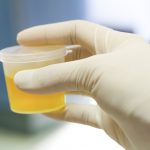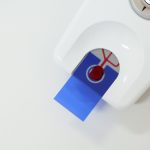Random Workplace Drug Testing: A Breach of Your Civil Liberties

Intoxication in the workplace is a significant safety issue. And for this reason, protocols are in place at certain worksites so that employees suspected of being under the influence of alcohol or other drugs can be tested.
Increasingly though, random drug and alcohol testing is being introduced into the workplace. This has usually been in the case of employees that work in safety-critical roles, such as construction, manufacturing and transport. But, it’s also starting to happen in workplaces that present less risk.
Sydney Water announced it was rolling out random drug and alcohol testing for all staff, contractors and even worksite visitors back in August 2017. A wide range of drugs were to be tested, including opiates, cannabis, amphetamines, cocaine and prescription benzodiazepines.
However, while safety is an issue when it comes to the use of these substances at work, randomly selecting individuals to undergo these tests without any reasonable cause for doing so would seem to be a breach of their civil liberties.
And further, while workplace alcohol testing is similar to random breath testing – which tests for levels of impairment – the drug testing being carried out at work is traced-based. This means an employee can potentially test positive for a drug they’re no longer under the influence of.
A search with no basis
“Random testing is not an appropriate way to approach what is essentially a performance issue in many cases,” said Dr Mary Ellen Harrod, chief executive officer of the NSW Users and AIDS Association (NUAA).
“The rights of individuals to be protected against unlawful search – search with no basis – is a part of Australian law,” she continued, adding that testing without any suspicions of use is unreasonable on those grounds.
And in cases where an employee is suspected of being under the influence and may put others’ lives at risk, Dr Harrod pointed out that besides procedures that might already be in place at a worksite, there are also “physiological tests” that are effective, “such as the Field Sobriety Test”.
This is a series of tests that can be used to ascertain whether a person is under the influence of drugs and alcohol. The tests include walking in a straight line and standing on one leg. And it’s been shown to work 90 percent of time when US police officers have applied it to drunk drivers.
“As someone who has experience in line management,” Dr Harrod explained, “it feels like a shortcut to me, because properly done HR is time consuming and difficult.”
Drug testing for traces, not impairment
Random breath testing measures levels of alcohol in a driver’s blood. An individual with a blood alcohol concentration of over 0.05 has broken the law, as it’s been scientifically proven that levels that exceed this limit make a driver a danger on the road. This technique is much-lauded.
In comparison, roadside drug testing in NSW has been widely criticised, as when police take a saliva sample their devices only test for traces of four substances – cannabis, MDMA, amphetamines and cocaine – so a person can test positive for a drug in their system long after the effects have worn off.
In February 2016, Lismore Magistrate David Heilpern ruled Joseph Carrall was not guilty of drug driving, as it was found the defendant had last smoked cannabis nine days prior to testing. And this magistrate is well-versed in these types of drug driving cases.
And this is the same system that’s being carried out today in workplaces throughout this state. Individuals are subject to a breathalyser test that gives an accurate reading as to how much alcohol is in their system, whereas a saliva sample can reveal minute traces of a drug when tested.
Unrelated to work performance
Dr Harrod told Sydney Criminal Lawyers that randomly testing employees for drug use and not impairment in cases where it doesn’t “affect work performance is problematic on a number of grounds”.
“First and foremost, it is a violation of our right to privacy,” she made clear. “People have a right to privacy in Australia – and under UN conventions – and this right is extended to personal health information.”
According to Harrod, there is the real possibility that fluid sample could be retained and tested for other conditions without an employee’s knowledge. This could potentially lead to the information being used in a detrimental way against a worker.
And this takes us into the realm of moral judgement, Dr Harrod put forth. Expensive and “not always accurate” drug tests are being randomly carried out on employees in cases that have “nothing to do with the performance of a job”.
Therefore, employees are potentially being sent home after testing positive for an illicit drug they might have used days prior in their free time. And not only could this lead to more serious penalties – such as dismissal – but it’s also a stigmatising process to go through in front of work colleagues.
Testing for drug impairment levels
And while it might be argued that those companies carrying out workplace drug testing don’t have the capacity to test for levels of drugs in an individual’s system, technology that does just that is being utilised elsewhere in the world.
Since February 2012, the Norwegian government has had a drug driving regime in place that involves police testing drivers for a range of non-alcohol drugs at levels that have been scientifically proven to impair driving abilities.
So, while the current system of randomly testing individuals for mere traces of illicit substances in the workplace continues, in cases where employees aren’t under the influence, it remains a method of punishing them over their use of illicit substances and does little to improve workplace safety.
A drug war tactic
“Finally, testing for use and not impairment in every situation is another weapon in the war on drugs and the war on people who use drugs,” Dr Harrod continued. And she likened its use to sniffer dog operations that cause “disastrous consequences” in people’s lives with no real societal benefits.
Indeed, penalising employees for drug use on their own time can be thrown on the pile of numerous other failed drug war tactics, such as imprisonment for personal possession, the over-policing of events and the proposal to drug test welfare recipients, which all increase the harms of drug use.
“Measures like this only increase the ‘hidden’ nature of drug use because drug users must hide to avoid stigma and discrimination,” Dr Harrod concluded. “It makes it more difficult to access health care and perpetuates cycles of disadvantage.”







